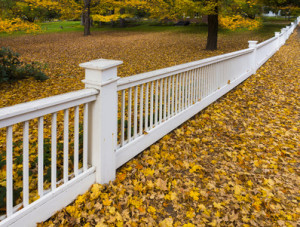Fencing Installation Sussex County – How to Install Vinyl Fence?
Vinyl fencing comes in many designs and colors. They are very easy to install with low maintenance requirements. Vinyl Fencing withstands rain, sun and snow. Vinyl or PVC fencing have gained popularity over the years due to being lightweight, easy to maintain and quiet affordable compared to wood and other fencing materials. However, you need to consider that vinyl reacts to extreme temperatures. Before you start your vinyl fence installation project, always make sure that you have the necessary tools and equipment to do the job.
 SECURE THE FOLLOWING REQUIREMENTS
SECURE THE FOLLOWING REQUIREMENTS
- Call 811. This is to ensure that you won’t be hitting any utility lines before setting up fence post or digging holes. Or be placing your fence right on top utility lines.
- Mention to your neighbors about your plan to install a fence.
- Secure a permit. This is to ensure that you are within boundary limits and within the height limitations of a fence. Also you may want to have a survey done within your area to determine your property.
- Easements – Check for easement requirements on your property deed.
Steps in Vinyl Fence Installation
- Be sure you have all the necessary tools and equipment to do the job. All materials should also be purchased ahead of time.
- Measure the area. This is to know how many post and fence panels you will need to finish the job. One miscalculation can cause a big setback.
- Purchase the vinyl post and fence for your project. You can choose from 2 to 8 feet or vinyl fencing. Mark the post area and start digging holes making sure the depth is
- Fill the holes with concrete, place the post and let it dry for 24 hours. Follow the products specific directions when installing vinyl fence.
- Fasten the vinyl post tops with the hardware provided. Refer to manufacturer’s directions for proper installations.
Privacy Fence – These are typically solid panel fences ranging from 3-6 feet in height.
Picket Fencing – Picket fences are decorative and ideal for residential homes.
Pool Fencing – Most pool fences are 4 feet in height. Check your local building code for proper local requirements.
Post and Rail – Used for horse and other animal enclosures.
Vinyl fencing is typically more expensive than many wood alternatives. The cost benefit over time is less than wood due to durability. Vinyl will not rot and is easy to maintain. A simple power wash will keep it looking new and clean. The risk of posts rotting is eliminated.
Vinyl fences come in panels with weather resistant hardware and fasteners. You have the option of many styles plus different caps, gates and trellises.
